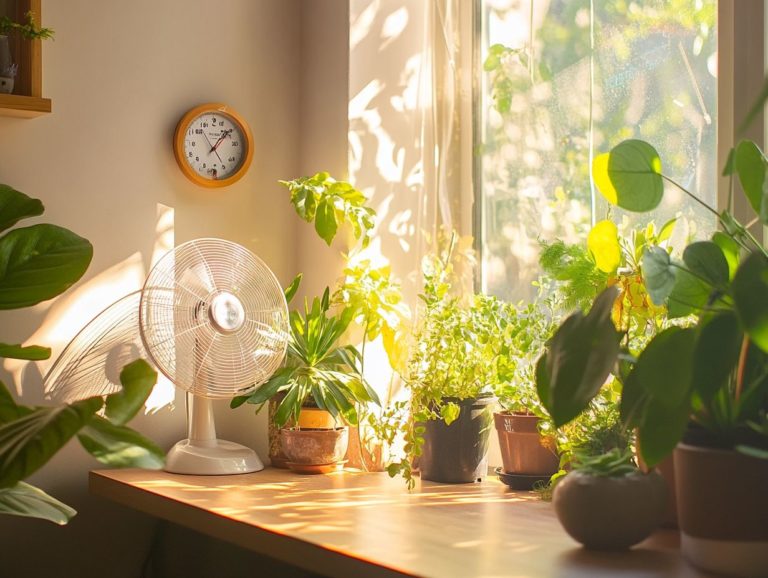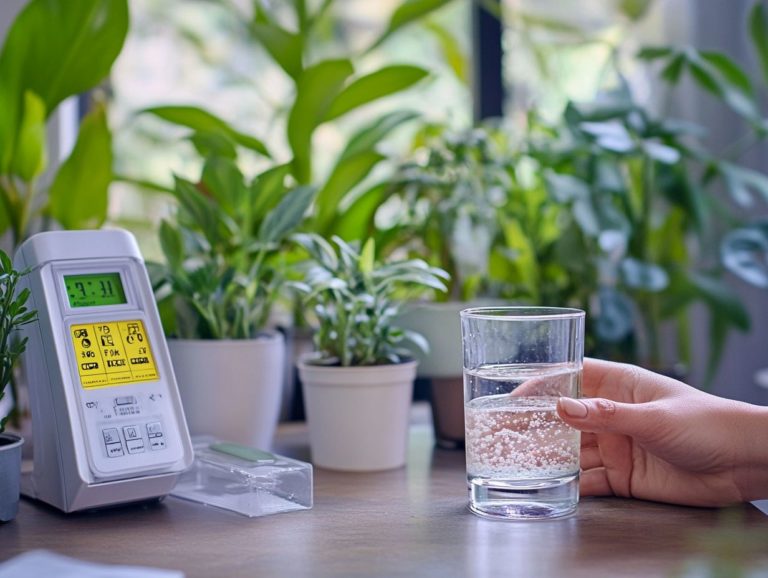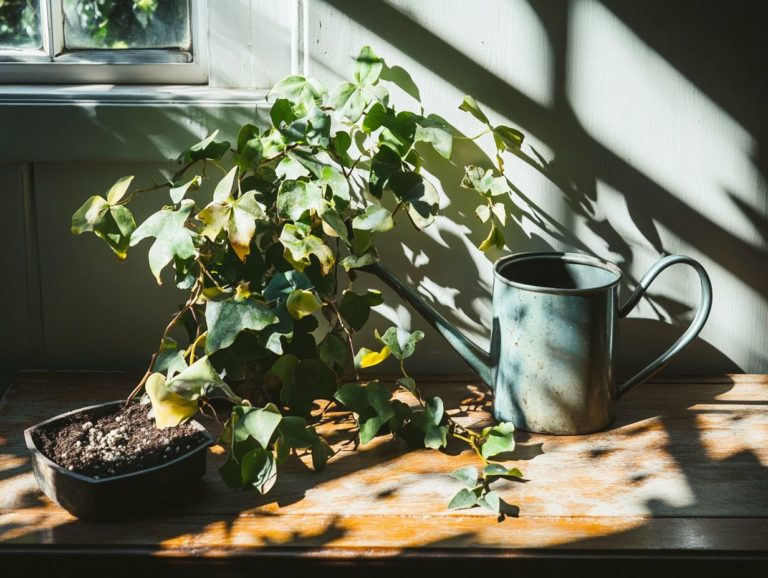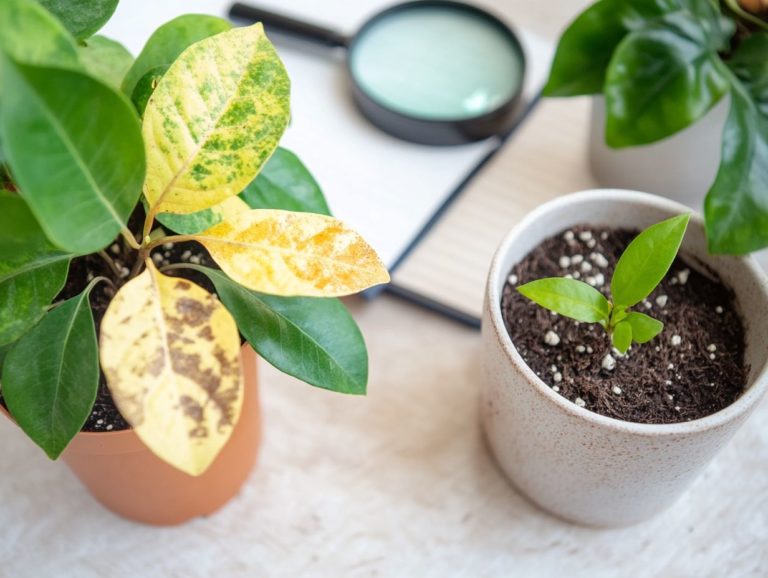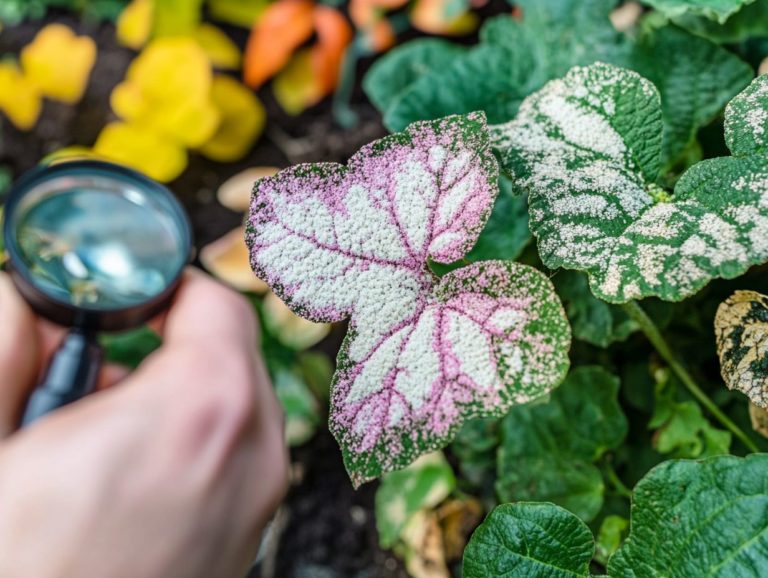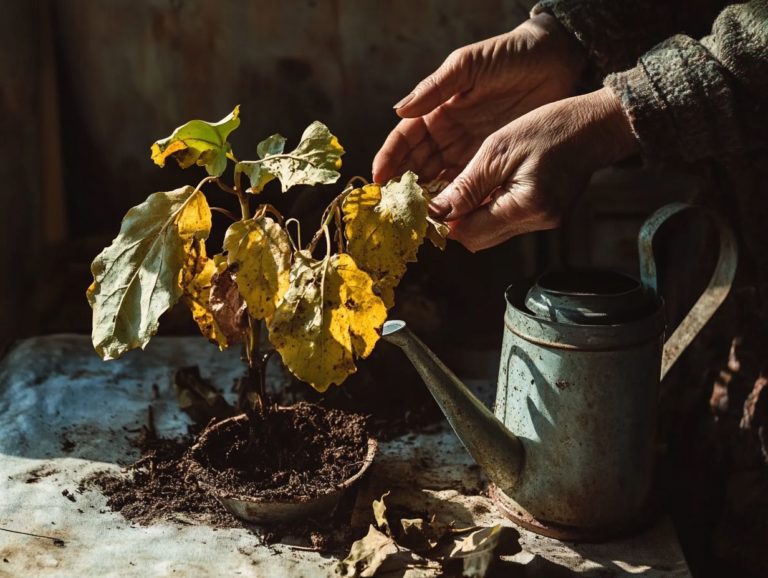Recognizing and Fixing Leaf Curling
Leaf curling is a common challenge for plant lovers. Understanding the causes is essential for restoring your plants’ health.
This article delves into the signs and symptoms of leaf curling. You’ll find effective treatment options and practical tips for maintaining your plants’ well-being.
It also highlights when to seek professional help, ensuring your plants not only survive but thrive in any environment. Dive into these tips to keep your plants thriving!
Contents
Key Takeaways:
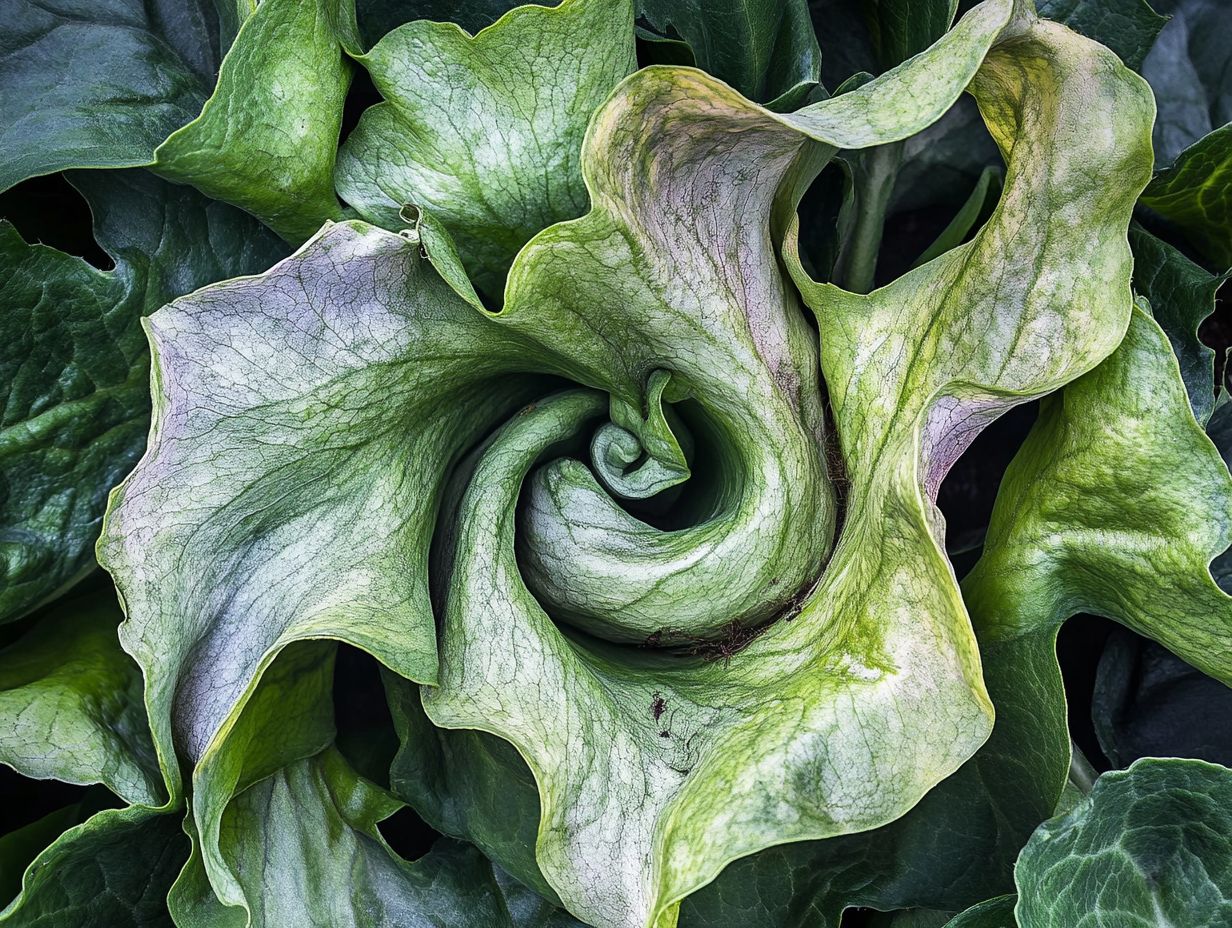
- Leaf curling is a common problem in plants caused by factors such as pests, diseases, and environmental issues.
- Identifying leaf curling through signs like wilting and discoloration is crucial for prompt treatment to prevent further damage.
- Fixing leaf curling involves treating the underlying cause, such as using pesticides for pests and adjusting watering and sunlight for environmental factors. Prevention through proper plant care is also essential.
Understanding Leaf Curling
Understanding leaf curling is crucial for maintaining your plants’ health, especially with popular varieties like Heuchera, also known as Alumroot or Liverleaf.
This phenomenon can indicate various issues, from environmental stress that disrupts soil moisture to potential pest infestations harming your plants.
In places like Ohio, you may notice leaf curl symptoms as an early sign of nutrient deficiencies or root rot. Recognizing and addressing these problems promptly is essential for flourishing plants.
What Causes Leaf Curling?
Leaf curling can arise from many factors, including pest infestations from aphids and spider mites, which weaken your plants and disrupt their growth.
Nutrient deficiencies also play a critical role. Insufficient levels of essential elements like nitrogen, potassium, and magnesium can severely hinder a plant’s ability to maintain healthy foliage.
Environmental issues, such as drastic temperature fluctuations, inadequate light exposure, or improper watering practices, may exacerbate leaf curling.
These factors rarely act alone; they often interact, creating a compounded effect that significantly impacts your plants’ overall health.
Regular monitoring of your plants is essential for swiftly identifying symptoms of these challenges. This proactive approach allows for timely interventions, helping to restore vitality and promote robust growth.
Identifying Leaf Curling
Identifying leaf curling requires recognizing distinct symptoms such as yellowing leaves, leaf scorch, or a wilting appearance.
Signs and Symptoms

Common signs of leaf curling include yellowing leaves and leaf scorch, often indicating nutrient deficiencies or environmental stress.
As you observe your plants, watch for distorted leaf shapes and stunted growth. These can signal potential pest infestations or improper watering practices.
For example, an aphid attack can cause leaves to curl inward, while overwatering may lead to root rot, worsening leaf health.
If you notice browning edges and crispy textures, it might indicate excessive heat or low humidity levels, putting additional stress on the plant.
Recognizing these signs early is vital for enacting effective remedies whether refining your watering schedule or treating for pests. Taking these steps will ensure your plants thrive while retaining their aesthetic appeal.
Fixing Leaf Curling
Addressing leaf curling requires a thoughtful assessment of the root causes. You can explore various treatment options, including organic insecticides like neem oil, balanced fertilizers, and proper pruning techniques.
Start taking action today to rejuvenate your garden and enjoy vibrant plants!
Treatment Options
For effective treatment of leaf curling, start by using organic insecticides like neem oil, paired with balanced fertilizers to replenish nutrient levels. Ensure proper drainage to prevent root rot.
These methods target pests such as aphids and spider mites culprits behind leaf curling. They also address underlying issues like a lack of nutrients. By applying neem oil periodically, you create a protective barrier that promotes plant health. For the best results, spray during the early morning or late afternoon to minimize evaporation.
Incorporating slow-release fertilizers gradually provides essential nutrients, ensuring your plants have everything they need to thrive. Regularly check soil moisture and optimize drainage to avoid root rot, which ultimately supports overall plant vigor and reduces leaf curl symptoms.
Preventing Leaf Curling
To prevent leaf curling, you must first create the ideal environment for your plants. Focus on essential strategies like ensuring proper drainage, applying mulch, and optimizing soil conditions.
These steps will set the foundation for vibrant, thriving plants.
Tips for Maintaining Healthy Plants

To maintain healthy plants and prevent leaf curling, consider implementing strategies such as adding mulch and ensuring optimal soil conditions. Regularly monitor your plants for any signs of distress.
Don’t ignore signs of overcrowding! Recognizing them early can save your plants. Assess plant spacing to ensure there s enough room for each plant to thrive. Regular pruning can also alleviate densification, promoting healthier growth patterns.
Companion planting, which involves growing different plants together, can maximize space and deter pests. Keep an eye on moisture levels and promptly address wilted or yellowing leaves to further boost vitality, giving each plant the best chance to flourish.
When to Seek Professional Help
Recognizing the right moment to seek professional assistance is essential, especially when you notice alarming signs of significant plant distress, such as root rot, fungal infections, or issues from temperature stress and nutrient imbalances.
Signs of Serious Plant Issues
Signs of serious plant issues include persistent yellowing leaves, root rot, fungal infections, and nutrient imbalances. These demand your immediate attention.
When you overlook these symptoms, you might face more severe consequences, such as stunted growth, complete plant death, or even infestations spreading to neighboring plants. For instance, if you dismiss yellowing leaves as just a seasonal change, you could miss a critical nutrient deficiency threatening your plant’s overall health. A seemingly minor fungal infection could escalate into root decay, jeopardizing the entire ecosystem of your garden.
In such situations, seeking professional consultation becomes essential. It s not just about diagnosing the root causes of these issues but also about implementing effective treatment strategies to preserve the beauty and vitality of your plants.
Frequently Asked Questions
Wondering what leaf curling is and how to spot it?
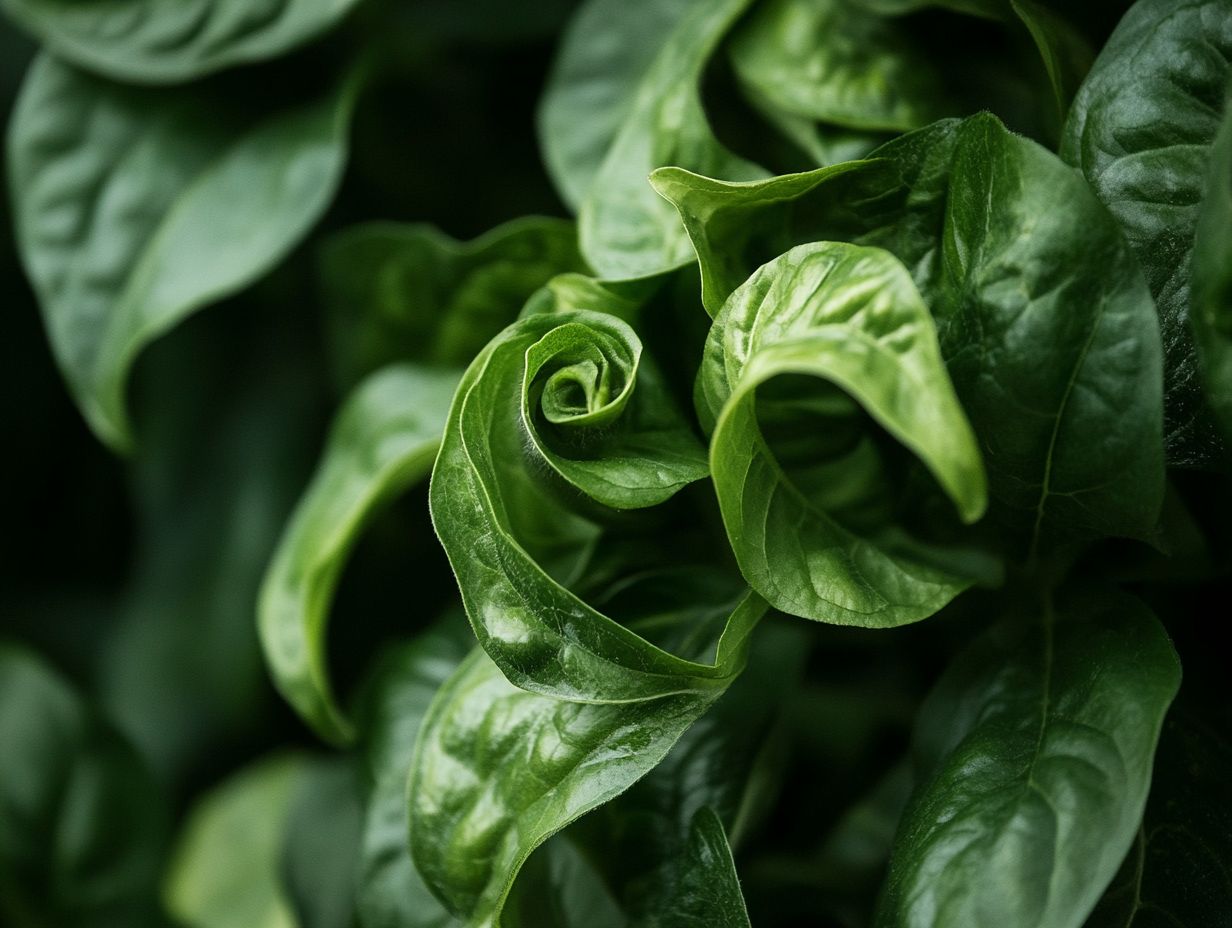
Leaf curling is a common symptom in plants where the leaves, instead of laying flat, begin to curl upwards or downwards. This can be caused by various factors such as pests, diseases, or environmental stressors. You can recognize leaf curling by closely examining the leaves for any abnormal shape or curvature.
What are some common causes of leaf curling?
Leaf curling can be caused by several factors including pests like aphids or spider mites, diseases such as powdery mildew or leaf spot, and environmental stressors like extreme temperatures or lack of water. Identifying the specific cause of leaf curling is crucial to finding the appropriate solution.
Check your plants right away for any signs of distress and consult with a professional if needed!
How can I fix leaf curling in my plants?
Fixing leaf curling depends on its cause. If pests are to blame, use insecticidal soap or neem oil.
For diseases, remove affected leaves and apply a fungus treatment. Ensure your plants receive regular watering and adequate sunlight to reduce environmental stress.
Can leaf curling be prevented?
Yes! You can prevent leaf curling with proper care.
This includes regular watering, using the right fertilizer, and keeping an eye out for pests and diseases. Avoid drastic temperature changes and ensure your plants get enough sunlight.
Is leaf curling harmful to my plants?
Don’t worry! Leaf curling usually isn’t harmful and can be easily fixed.
However, if ignored, it might stunt growth and reduce yield. Severe curling can signal a more serious issue that needs attention.
Are there any natural remedies for fixing leaf curling?
Absolutely! Natural remedies can effectively fix leaf curling.
Try spraying a mix of equal parts water and vinegar on pest-affected plants. For fungal issues, use a baking soda and water solution. Compost or organic fertilizers can also help improve plant health and reduce stress.

